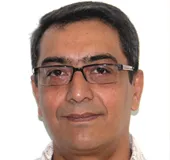 This article is part of the series — Post-Pandemic Development Priorities.
This article is part of the series — Post-Pandemic Development Priorities.
It’s been five years since the 2030 Agenda for Sustainable Development was adopted at the UN Sustainable Development Summit. The Sustainable Development Report 2020 (SDR2020) was released in June 2020. Its opening statement is “COVID‑19 will have severe negative impacts on most
SDGs.”
Despite starting public inoculation in record time, SARS-CoV-2 will continue to exact a heavy price over the short term. COVID-19 is, indeed, an unprecedented setback for the world’s ambition to achieve the SDGs, but I sense déjà vu. During the period 2000-2015, the world did not experience a pandemic, yet most targets of the Millennium Development Goals remained
unmet.
The SDR2020 has cautioned that the pace of progress may not be sufficient to achieve the SDGs by 2030 and there might be calls for the 2030 timeline to be extended. On the contrary, the world must redouble efforts to achieve the SDGs during the Decade of Action.
The global rate of species extinction is already at least tens to hundreds of times higher than it has averaged over the past 10 million years.
Even before COVID‑19, many parts of the world were progressing slowly or experiencing
reversals in SDG 2 (Zero Hunger) and SDG 15 (Life on Land). Reversals in SDG 15 are due to accelerated loss of terrestrial and freshwater biodiversity despite an increase in protected areas. Biodiversity threats and deforestation as reported by
IPBES and
IPCC are causing reversals on this goal in many countries, including India. The global rate of species extinction is already at least tens to hundreds of times higher than it has averaged over the past 10 million
years.
Due to the interlinkages between the goals, reversals in SDG 15 have cascading impacts across other goals, SDG 3 (Good Health and Wellbeing) and SDG 13 (Climate Action) in particular. Loss of biodiversity tends to increase pathogen transmission and disease
incidence. Since forests host 80 percent of the world terrestrial species and can provide up to one third of carbon sequestration necessary to hold temperature rise below 2
oC, urgent action on SDG 15 over the next decade should be non-negotiable despite
arguments in certain quarters that developing countries are better off pursuing economic and social policies in the short-run.
The cause and effect relationship among the goals must be leveraged. Is there a hierarchy among the goals that need to be factored in?
India already uses over half of its territory as
cropland. By 2050, India’s population is projected to be more than
1.6 billion, necessitating increased food production. Over the next decade, India must find ways to meet this increased demand without modifying natural areas. This will help avoid deforestation (target 15.2) and protect biodiversity and natural habitats (target 15.5). The effort must factor in global warming as crop yields are projected to decline with every degree Celsius rise in
temperature. Such action would also contribute to Climate Action targets. The SDGs are not mutually exclusive; each one influences a few others and, in turn, is influenced by them. This cause and effect relationship among the goals must be leveraged. Is there a hierarchy among the goals that need to be factored in?
A
study published in 2017 presented all the SDGs in the form of a hierarchy. The authors argued that the knowledge of interaction among the goals and how they influence each other would help policymakers to draw up strategic plans to achieve the SDGs. According to the authors of that study, SDG 4 (Quality Education) is the most basic. It is supposed to instill motivation among the population to strive for the cause of sustainable development and to save the planet for generations to come. Indeed, universal access to quality education will pave the way for sustainable development through greater awareness and consciousness but unless this happens overnight, literally, several
planetary boundaries would be breached. The fundamental hierarchy among the SDGs with the planet goals (SDGs 12, 13, 14 and 15) at the base must never be lost sight of while pursuing people goals and prosperity goals; a dead planet cannot play host to people.
Universal access to quality education will pave the way for sustainable development through greater awareness and consciousness, but unless this happens overnight, literally, several planetary boundaries would be breached.
Every two years, the Forest Survey of India (FSI) undertakes assessment of the country’s forest resources and presents it as the
India State of Forest Report (
ISFR). The latest in the series, published in 2019 is the sixteenth since 1987. The current assessment shows the total forest cover of the country as
712, 249 sq km (21.67% of the geographical area), an increase of 3,976 sq km of forest cover compared to the previous assessment.
ISFR 2015 had reported 701,673 sq km (21.34% of the geographical area), an increase of 10,576 sq km, since the launch of the SDGs. This is impressive given the burgeoning population pressure in India. Yet, SDR2020 report
reversal on SDG 15 in India. How is it that forest cover in the country has increased but SDG 15 score has decreased? Simple, ‘Forest Cover’ and ‘Forest Area’ do not mean the same thing. Forest Cover includes all lands more than one hectare in area with a tree canopy density of 10% and includes orchards, bamboo and palm. Given that FSI calls the report State of Forest, it must convey the state of forest. This should be on the agenda for the Decade of Action. Corrective measures can only be taken on the basis of correct information.
The views expressed above belong to the author(s). ORF research and analyses now available on Telegram! Click here to access our curated content — blogs, longforms and interviews.



 This article is part of the series —
This article is part of the series —  PREV
PREV


